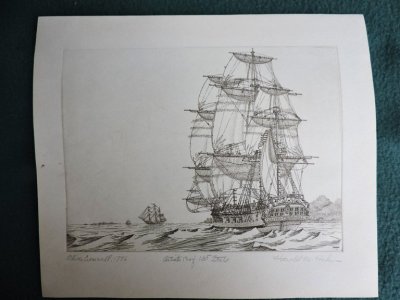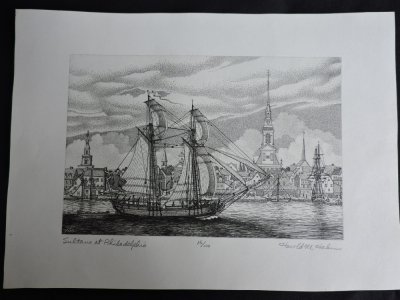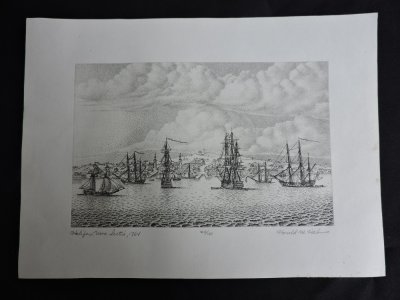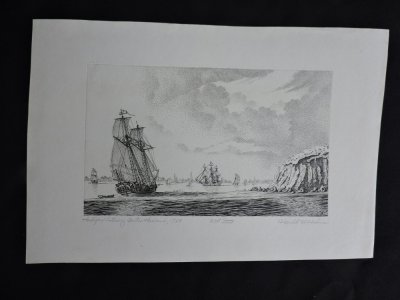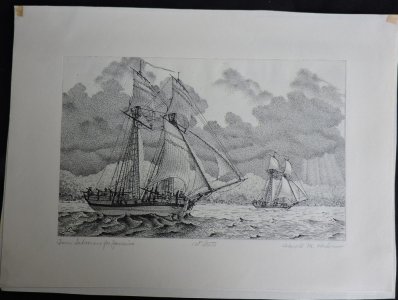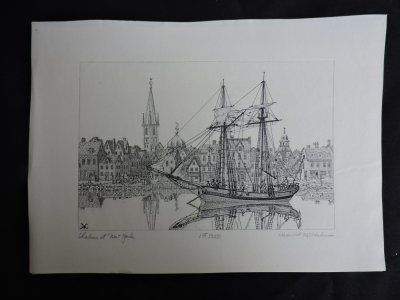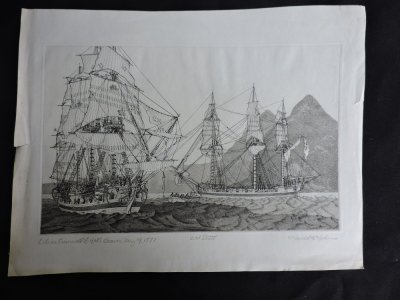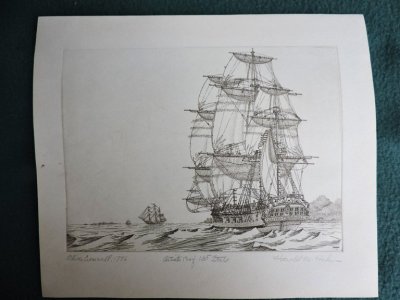The artist Harold Hahn
the work of Harold Hahn had a major impact on the hobby of model ship building. His ideas molded a generation of model builders and those inspired by his work carry his work forward into the new generation.
All the images you will see are from the Cleveland Museum of art as well from the estate of Harold Hahn. They are shown here with the permission of the museum and the estate please do not copy them as you may get the SoS in trouble if they leave this forum. Harold never stopped working he was a prolific artist, every wall in his house hung paintings and sketches, model ships were on display in his house as well as the homes of his children and piles and piles of water colors, drawings, prints, sketches and etchings. Many times, i sat and went through his work as he told their story of where and why he created the piece Harold was a well-educated and refined man his intellect would shine, and you could feel his passion of art.
The question of art versus craft. The division between the two is not easy to define without writing a dissertation. Art can be the expression of an idea through craft, and more recently still, art can even just be an idea. Craft on the other hand is often the creation of object through a learned skill. Evidence of this is found in the history of guilds and trades in the renaissance through the journeyman process found even now in trades like carpentry. The museum does not define these things specifically, but collects objects which are examples of both historically. In other words an art museum defines art as a natural talent where as a craft is the result of a learned skill. An artist can pick up a brush or pen and ink or for that matter whatever medium chosen and without prior training will create a work of art. This is not to say an artist can't go through school or training and improve on the raw natural talent. What makes an item a craft is the result of a craftsman going through the process from apprentice to master craftsman or a journeyman learning the craft through a well defined set of rules and instructions.
What is going on when an artist takes a craft and raises it to a level of fine art? As defined above the artist redefines the craft through self expression. In the case of Harold Hahn he was a well established and award winning artist long before he built his first model ship. Self expression comes into play when Harold Hahn took the craft of model ship building which is a learned skill and adds an element of sculpture and expression. We can accomplish the craft of model ship building through learning and training but no matter how hard some of us try we can never accomplish the level of sculpture achieved by the natural talent of Hahn, this is the dividing line between art and craft.
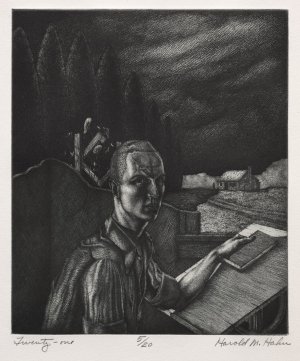 Twenty-one (Self-Portrait), 1942.
Twenty-one (Self-Portrait), 1942. Harold Maxwell Hahn (American, 1920-) Etching; The
Cleveland Museum of Art, Gift of The Print Club of Cleveland 1942.311
In almost all Hahn prints there will be a building which suggests Harold's interest in structure and architecture. Realizing the path of the starving artist was not for him he went to school at Case Western University school of applied science where he enrolled in the engineering curriculum resulting in a career as an engineer and not as an artist.
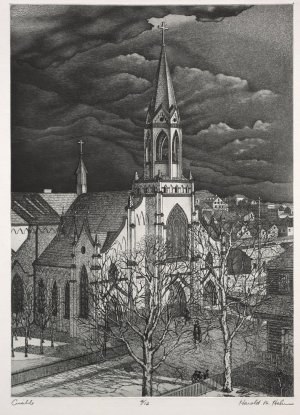
Crucible 1942
etching and aquatint
gift of the print club of cleveland 1942
Cleveland museum of Art collection
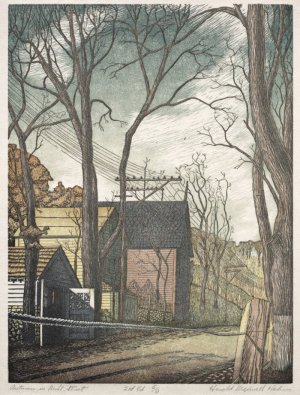
linoleum cut watercolor
cleveland Art museum collection
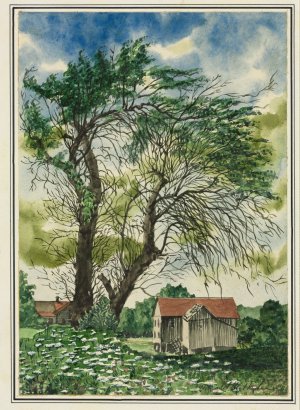
Queen anne's Lace
cleveland Art museum collection
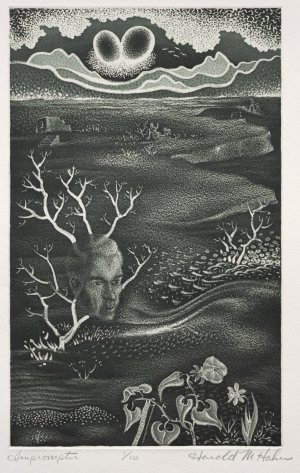
Although structures appear in many of his works Harold did dabble in the abstract, however in the back round it looks like steps and some sort of structure.
Impromptu
aquatint
gift of the Print club of cleveland 1948
Cleveland Museum of Art collection
As an artists medium Harold first learned Linoleum cutting then engraving on end grain blocks of Boxwood. Following he learned the different approaches to working on polished copper plates: drypoint, engraving, line etching, soft ground etching, and other aquatint techniques. All of the methods for producing pictures represented direct application of the artists creative efforts and special skills. At the time i met Harold i was working in a print shop specializing in limited edition art prints and learning how to do etchings. The etchings done by Harold should not be confused with commercially printed reproductions of an artists work. The mechanically produced offset lithographs are "copies" of the original artists work, however they are reproductions of the actual etching and lack the detail of the original prints made direct from the copper plates.
The process of creating and printing a line etching begins with a polished copper plate. This plate is heated and a ball of hard ground wax is touched to the hot plate to deposit enough wax on the surface so it can be rolled out into a smooth coating. Next the plate is passed over a candle flame until the warm wax is impregnated with the smoke to produce a uniformly blackened surface. The design is then traced onto the plate, bearing in mind that when the image is printed, the image will be reversed. The picture is cut on the grounded plate with a sharp point that cuts into the hard wax to expose the copper.
The contrast between the blackened wax and the bright copper color produces a well defined negative image. After drawing all the lines that will be the heaviest in the picture, the plate is submerged in a diluted solution of hydrochloric acid. The time the plate is left to etch in the acid is determined by the skill and experience of the artist. After the first etching the next pronounced lines are scribed in the wax and the plate is once again etched. This process is repeated from the heaviest lines to the finest lines. Some drawings will require as many as six acid etchings ranging from two minutes to two hours. When the final etching is done, the wax is cleaned from the copper plate and a test print is made. In most cases the cycles of etching may have to be done three of more times until the finished result is achieved.
Looking at the bottom of the prints you will see numbers for example 5/20 the top number is the number of the print and the bottom number is the amount of prints made. Lower the numbers the higher the value of the print. To assure the value of a print the artist will destroy the original copper plate so no more prints can be made.
Harold Hahn destroyed all the copper etching for all his prints but one and only one survived
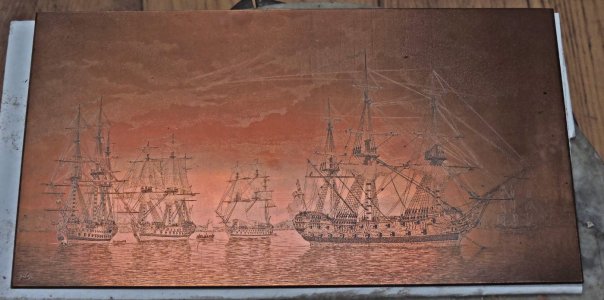

www.clevelandart.org

www.clevelandart.org

www.clevelandart.org

